
A lot of kids in the Philippines are fluent in English but sadly, not in Filipino. It’s no surprise then that more and more kids struggle with it in school.
We personally also have a lot of room for improvement in this area. Although my son can speak and understand basic Filipino, English is my son’s first language. So today I’m sharing some of the ways we are helping him improve his Filipino.
Hope these simple tips help you on your own journey as well!
Books in Filipino with English Translations
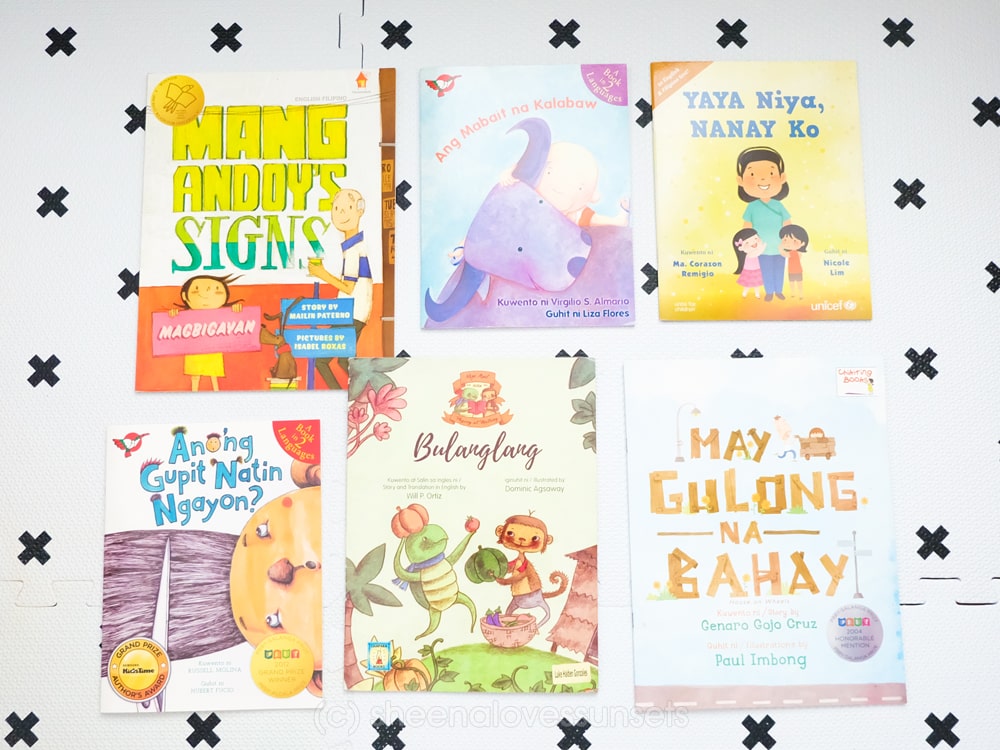
One of the things I’m super happy about is the wonderful selection of local children’s books that we have in the Philippines! There are so many well-written and well-illustrated books that are in Filipino. And if your little reader is struggling with the language, I recommend getting one with English translations.
Here are some of our favorite titles for kids 3-5 years old:
- Ang Mabait na Kalabaw
- Ang Bulanglang
- May Gulong na Bahay
- Anong Gupit Natin Ngayon
- Mang Andoy’s Signs
- Yaya Niya Nanay Ko
We usually get from Pumplepie, which is a curated online store for local children’s books.
Filipino Flashcards
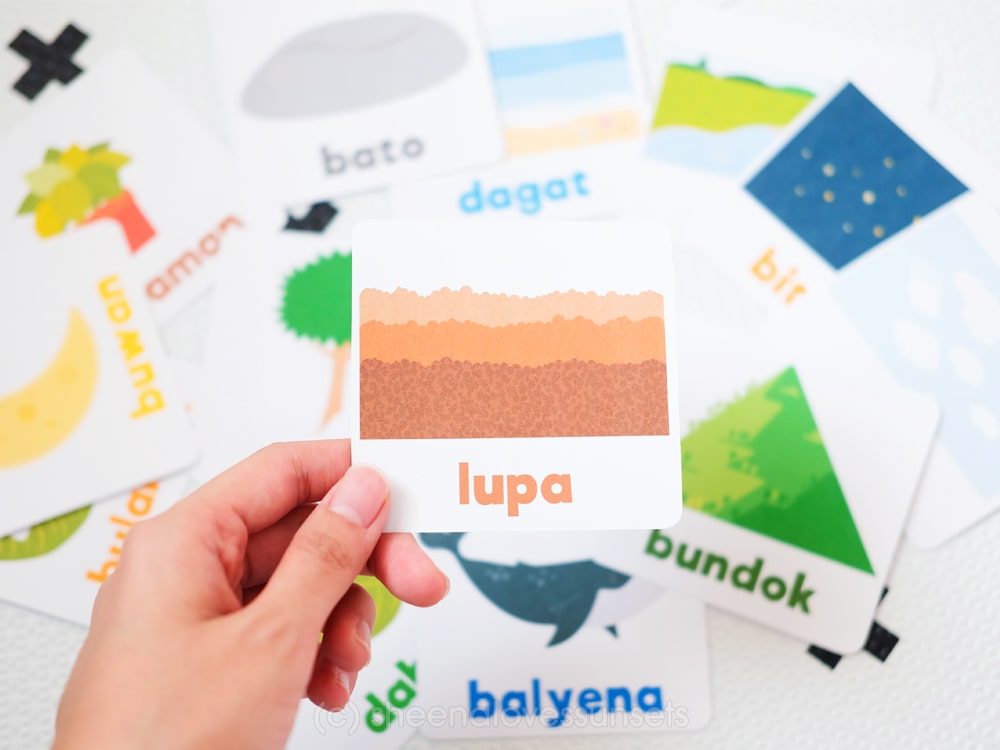
To improve his vocabulary, we use these Filipino flashcards from BuksanPH. Don’t they look cute? I personally love the minimalist design.
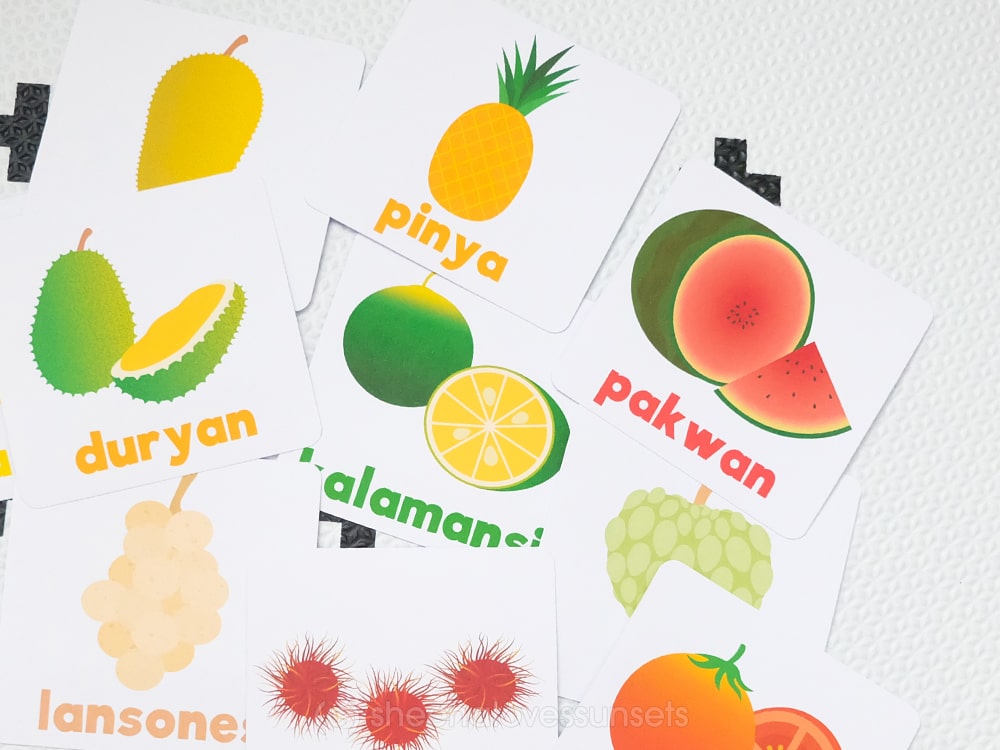
These flashcards cover different themes. They have sets on body parts, nature, weather, adjectives, community helpers, shapes, colors and a lot more.
You can purchase it at their online store.
Singing Filipino Songs
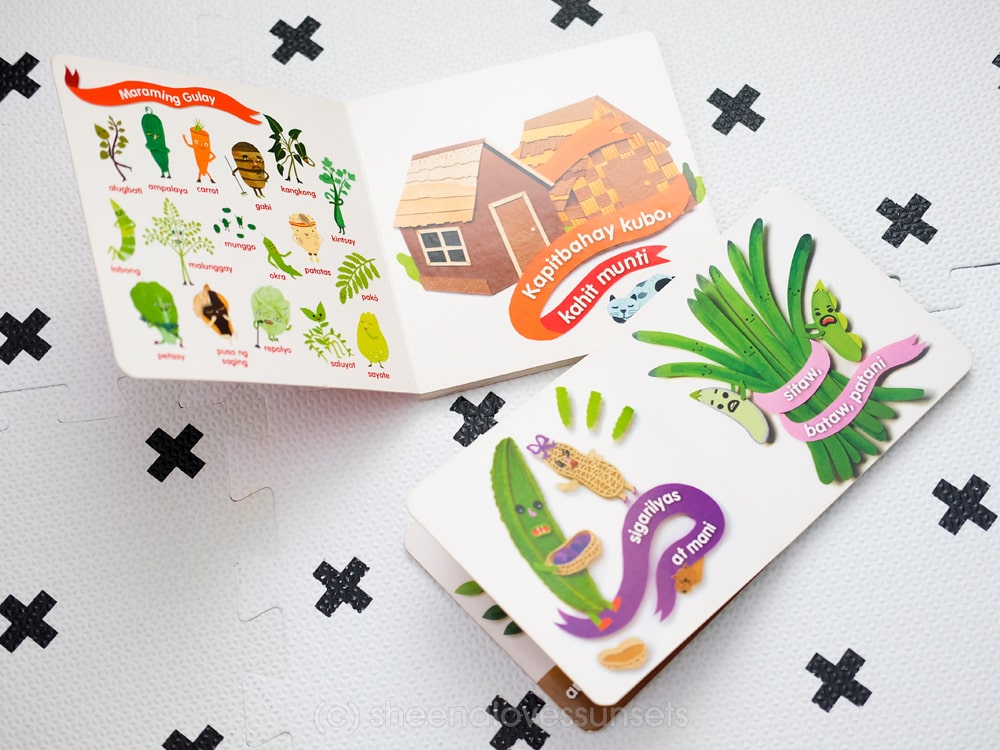
Songs are also a great way to introduce a language.
To be honest, we only know a few songs and rhymes in Filipino for now but I would like to introduce my kids to more! Right now, we sing Bahay Kubo, Tong Tong Tong Pakitong Kitong and Lupang Hinirang, the national anthem! Haha.
Additional tip: There’s a book called Bahay Kubo, which is nicely illustrated and features the lyrics of the song. There’s also a sequel called Kapitbahay Kubo that includes new vegetables not mentioned in the original song! You can sing the words to the tune of Bahay Kubo as well. Hehe so cute! (We also got these both from Pumplepie.)
Speaking Filipino Regularly
Out of all the tips mentioned above though, nothing beats using the language on a regular basis. There’s a common misconception that speaking in Filipino at home would result in the kids not being fluent in English or that it will confuse them, but this is absolutely NOT TRUE. Studies time and time again have debunked this myth.
In fact, research shows that multilingualism brings about many benefits such as improved cognitive skills, lower risks of experiencing Alzheimer’s and Dementia, and a deeper general understanding of language.
For our family, my husband and I speak in a mix of English, Filipino and Chinese. We also tell our helpers at home NOT to refrain from speaking with him in Filipino (sometimes, they think we only want Luke to speak in English, which isn’t true!) So my eldest, Luke, is able to pick up from all three languages and I like that.
I hope to speak more Filipino and Chinese with my boys so that they’ll be fluent in all three. I need help in this area as well. Hehe.
So, do you have any tips? Share them in the comments section below and we can learn from each other! 

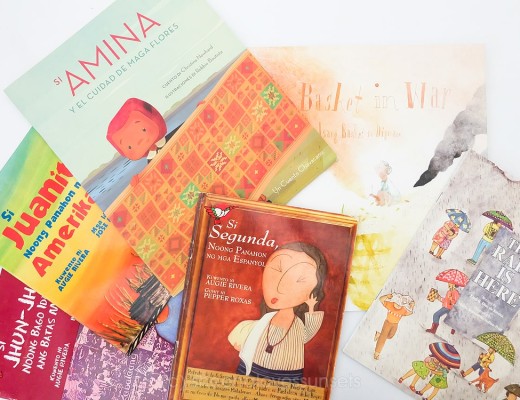
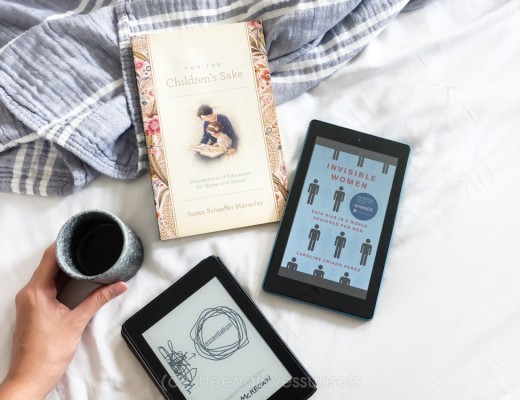

5 Comments
Joneza M
November 19, 2019 at 5:23 pmThis is very helpful for me specially that I’m a first time mom. We use cebuano dialect but I want my daughter to be more familiar with Filipino Language. Thank you for the tips! ?
Sheena Sy Gonzales
November 19, 2019 at 9:47 pmHi Joneza, glad this was helpful! Enjoy!
Mama_telyamzon
November 29, 2019 at 8:19 pmThanks for sharing this tips mommy!
Catleen Joy Estrivillo
May 8, 2020 at 8:45 amThe best!!! Thankyou mommy for the tips.
Mariane
June 30, 2020 at 3:56 pmTama tama mahalin ang sariling wika. At ito ay pagyabungin